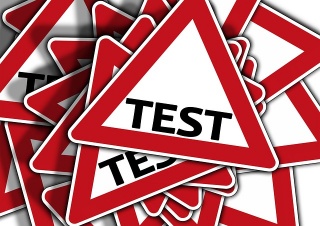Principles of marketing/PMKT103/Leveraging promotion tools/Quiz 1
From WikiEducator
Jump to: navigation, search
The questions published at the end of each learning pathway are re-used for the knowledge test for learners interested in earning a digital badge or certificate of participation for the Launching products and generating market demand (PKMT103) micro-course. Please consult the Certify participation page for more information.
True - false questions
Indicate whether the following statements are true or false:
- The available budget for marketing a product affects promotional reach and frequency.
- True
- Correct. The marketing budget affects the number of people reached by the message, as well as how often they receive the message. For example, smaller organizations tend to lack the funds to create and run a campaign of TV commercials because of the expense. They typically choose a blend of direct sales, public relations, social media and website promotion.
- False
- Incorrect. A company's marketing budget determines how frequently promotions run, and how many people they can reach. If a company has a small marketing budget, they may have to consider creative ways to generate awareness and visibility.
- True
- Integrated marketing communications is an approach that delivers multiple messages to buyers through TV, radio, magazines, the internet, mobile phones, professional selling, and social media.
- True
- Incorrect, A single, consistent message across all media channels is the hallmark of integrated marketing communications.
- False
- Correct. The strength of integrated marketing communications is grounded in a single, consistent message delivered across all media channels - direct sales, print, radio, TV and internet.
- True
- It always makes sense to pay attention to the cross-cultural implications of marketing.
- True
- Correct. A lack of cultural awareness, poor image choice or bad translations can have a strong, lasting negative effect on a product.
- False
- Incorrect. There are few 'always' in marketing - but this is one of them. Each group of people (i.e., market segment) has particular needs, characteristics, preference and culture. It's really important to discover the culture, and ensure marketing efforts are respectful of the culture - in terms of message, images, pitch people, style of communication, etc. It's up to the marketer to find out what works, and quickly modify what doesn't.
- True
- Promotional tactics are tools used in advertising, public relations, and sales promotions to communicate about the product and services and to persuade customers to buy them.
- True
- Correct, examples of advertising tactics include print, online, TV and radio adverts.
- False
- Incorrect. There are different tactics used with each promotional tool; for example, personalised e-mail is a tactic used in direct marketing.
- True
Multiple choice questions
- Which of the following best describes the important types of promotional tools?
- Advertising, sales promotion, public relations, direct marketing
- Not exactly – you have missed personal selling, which is an important type of promotional tool.
- Advertising, personal selling, sales promotion, direct marketing
- Not exactly – you have missed public relations, which is an important type of promotional tool.
- Advertising, personal selling, sales promotion, public relations, direct marketing
- That is correct - these are the five most important types of promotional tools you need to keep in mind.
- Advertising, sales promotion, public relations, direct marketing
- Which of the following is NOT a sales promotional tactic?
- Money back guarantee
- Correct – money back guarantee or satisfaction guarantee is not a sales promotional tactic; it is part of product or service features that differentiate it from others.
- Samples
- Not exactly – samples are one of the most important tactics in sales promotion. Samples are defined as offers to consumers of a small amount of product (shampoo, pet food, etc.) for trial.
- Coupons
- Not exactly – a coupon is a sales promotion tactic. It acts as a certificate that gives buyers savings when they purchase a specific product under specified time. They are widely used for consumer convenience goods.
- Contests
- Incorrect – contests are promotional events that give customers the chance to win something such as cash, trips or goods. They are a good tactic to attract new customers.
- Money back guarantee
- Which of these is NOT a primary use for an internet branding strategy?
- Identifying the customer base
- Not really – this is an important part of internet branding strategy.
- Telling the brand story
- Not exactly – using a variety of digital media and content is a great way to tell the brand story.
- Building a personal friend base
- Correct – internet branding is not about making a personal friend base even in individual or personal brands; it is about developing a professional network.
- Driving sales to an eCommerce site
- No - a key focus of internet branding strategy is very often about driving eCommerce.
- Identifying the customer base
- Companies tend to use different tools to create and shape a brand. Which of the following is not one of them?
- Brand definition
- Not exactly – that defines the brand purpose, values and promise and is an important branding tool.
- Brand identity
- Not really – the brand name, tone of voice, visual identity design ( including the logo design, colour palette and typographies) build the identity of a brand and are critical to shape a brand.
- Packaging design
- Incorrect – packaging design is the silent salesman that will grab busy consumers’ attention in-store. It informs consumers about the product’s properties and visually differentiates the brand from the competition on-shelf.
- Brand popularity
- Correct – brands become popular and well known due to effective branding.
- Brand definition
